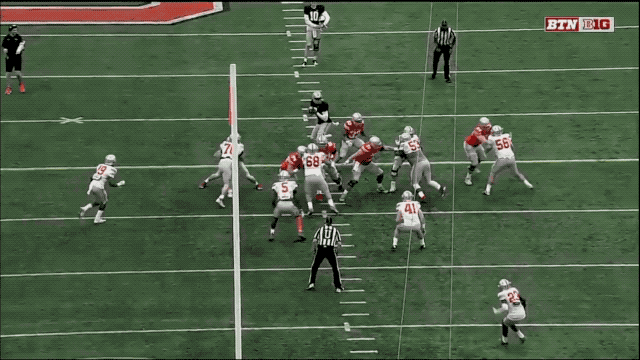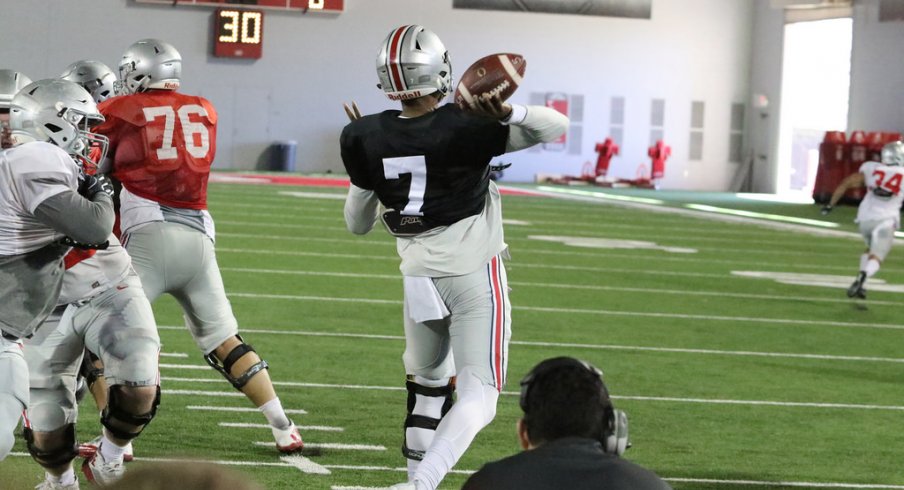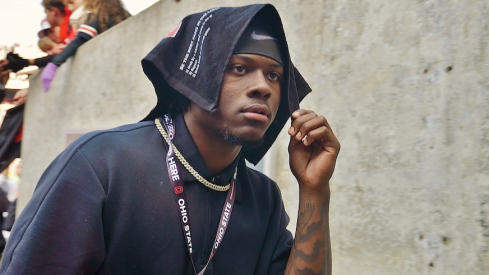In 4+ years of writing this column, no single topic has created more division amongst my readers than that of a quarterback's ability (or lack thereof) to throw downfield.
Here at Film Study, we examined the QB debate of 2015 more times than I can count, and even though we disagreed with the thoughts of many on #TeamCardale, we get it. It's easy to get transfixed by the beauty of watching him rain down deep balls in the 2014 Big Ten Championship game. We can watch this video all day as well.
Now, just a few short years later, another backup to J.T. Barrett is drawing rave reviews from the fanbase for his ability to sling it deep. Yes, despite the showing less athleticism in a system built around using the QB as both a runner and passer, Buckeye fans can't wait to see Dwayne Haskins under center.

But this space is not dedicated to debating the value of the deep ball over timing and accuracy. Urban Meyer has already answered that question.
"I will tell you what we look for," Meyer told 11W back in 2016. "Every great quarterback – and we’ve had some great ones – the No. 1 characteristic is competitive spirit. No. 2 is toughness. No. 3 is how they lead. No. 4 is intelligence. Then, No. 5 is the ability to extend the play."
However, it would be silly to dismiss arm strength altogether as an unnecessary piece of playing the position. As you'll see today, however, it's one of the most misunderstood parts of the game, as the physical strength of a quarterback's throwing arm has very little to do with their ability to 'spin it.'
Past readers may recall a breakdown last summer of the method by which offensive coordinator Ryan Day teaches his QBs to throw properly, starting with the feet and ending with the release of the ball. Just as anyone that has ever swung a baseball bat, golf club, tennis racket, or hockey stick knows, the arm is the least important part of generating power when throwing a football - it's simply the release point for all the torque created by the rest of the player's body unwinding towards a target.
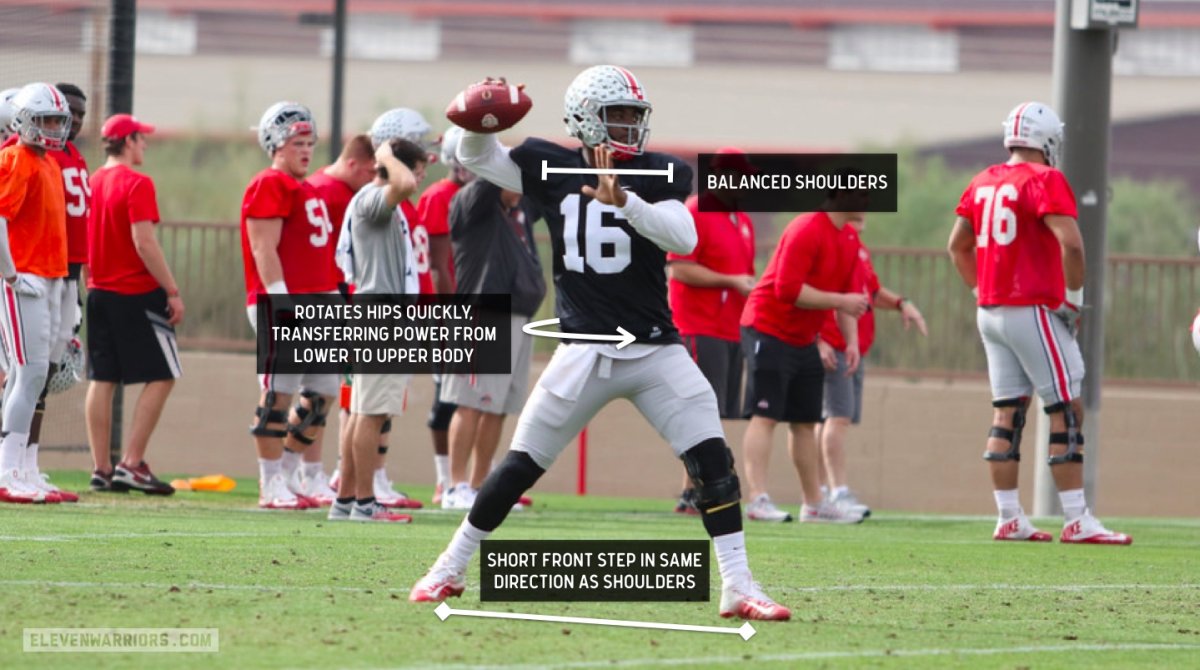
Simply stepping into the throw isn't enough, though, and very often the focus on footwork alone leaves out the critical work done by the QB's hips, which is truly where much of the power comes from, as all the power generated by the strong lower body is transferred up. For example, despite featuring a smaller frame than most NFL quarterbacks, Baker Mayfield seemed to effortlessly push the ball downfield, even when his feet weren't set.
11) Again, that ability to generate power from his core while still maintaining accuracy is something special pic.twitter.com/S1zoiFer87
— Kyle Jones (@Jones) April 28, 2018
Mayfield has an amazing ability to create momentum by flipping his upper body, even when his feet aren't stable on the ground. That special ability is quite unique, and what likely made him a Cleveland Brown.
As a quick YouTube search will show, however, there are countless methods and drills out there for developing such arm strength in young quarterbacks. Day's method, however, is systemic.
As part of their offseason workouts, OSU QBs begin by building their foundation and practice opening their hips. It's not a big step forward with their left foot (all the current quarterbacks are right-handed), but rather a quick step pointing the toe towards the target while they begin to push off their back foot.

Day then asks them to complete the motion without any movement of the arms, ensuring they bring their shoulders all the way around and finish with their chest square to the target. By crossing their arms tight to the body, they're forced to use only their core muscles to follow through, as there is no momentum created by swinging the throwing arm forward.
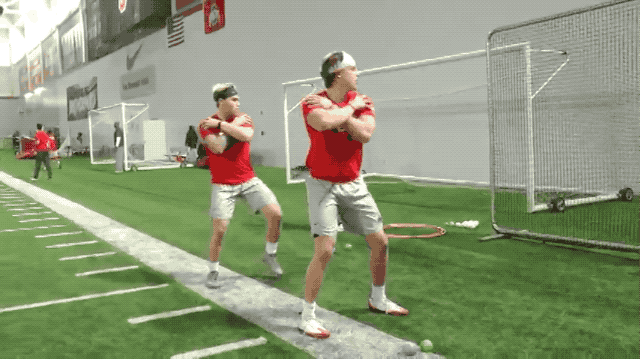
From there, Day adds weighted balls to mix, exaggerating the power needed to get the quarterback's arm around. If they simply try to use their shoulders, they'll hurt themselves, so this drill trains the arm to come through behind the hips thanks to the extra weight of the ball. To complete the motion, the QB must rely on their core to create the torque needed to follow through, eventually finishing the drill by throwing the ball into a net.

Once the motion has been repped from a stationary position, Day begins to add movement back into the mix. Starting 15 yards from the net, the QB steps through his full motion six times, building endurance and muscle memory as if the player were stepping up in a live pocket.
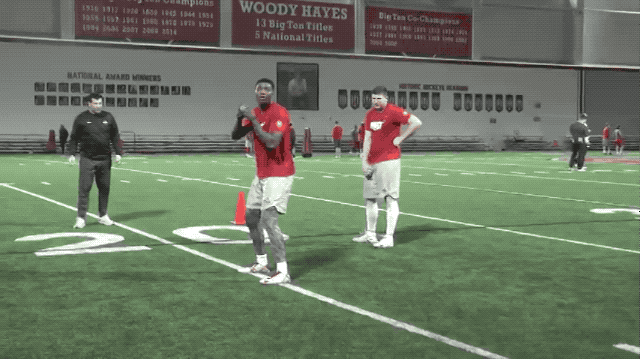
The final piece of the puzzle is the shift in momentum that comes as the QB transitions from their initial drop, planting their back foot into the ground and coiling up all the initial power that will eventually get released through the fingertips.
To practice, Day attaches a resistance harness to each player, forcing them to push off hard through each step of their drop before planting the back foot and throwing. While this seems like a simple task, the ability to transition one's weight into their throwing motion is crucial to the entire process, as too much weight on the back foot leads to a weak throw. The back foot must act like a spring, taking in all the momentum and releasing it back in the same direction.

As Mayfield showed, though, not every throw comes off a clean drop, making it important to stay balanced when moving around in the pocket. To practice, Day makes his quarterbacks shuffle around a makeshift pocket at his command, keeping their shoulders square throughout. Though their feet aren't set, their upper body remains upright and even, allowing them to quickly generate power through the core once ready to throw.
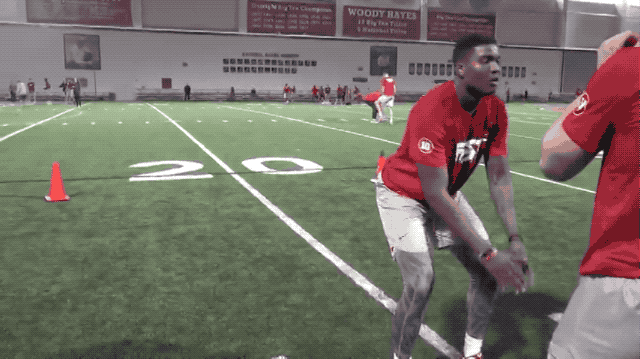
As you've probably noticed, none of these drills feature an actual football. NCAA rules prohibit live ball drills throughout much of the offseason, but such regulations allow coaches to focus on the building blocks of a throwing motion without ever worrying about the result of a throw. Once spring and fall camps open, however, the fundamentals are already in place, allowing them to focus on timing and execution, rather than mechanics.
As Haskins showed in the Spring Game last April, that approach seems to be a winning one.
